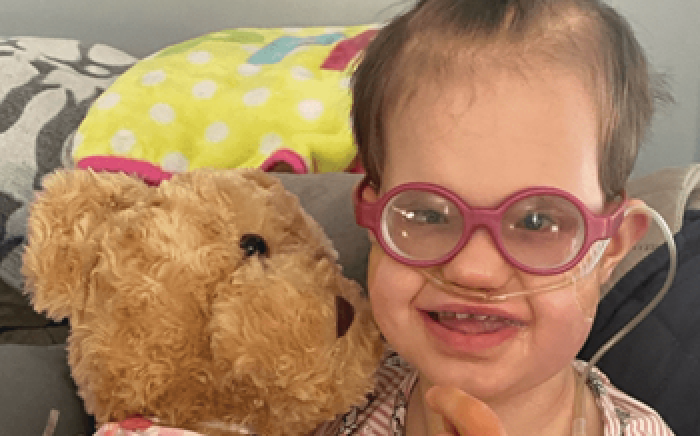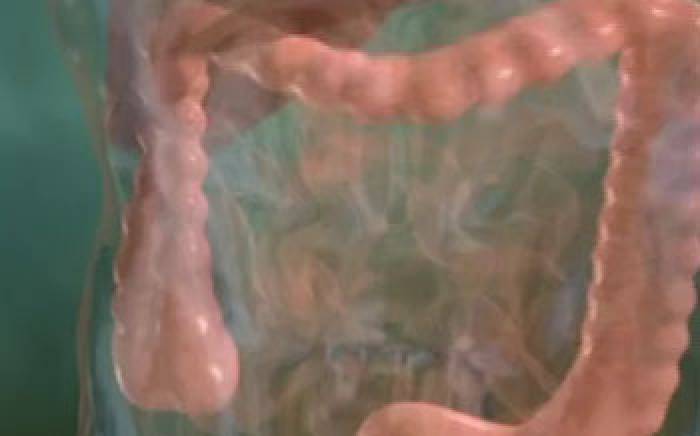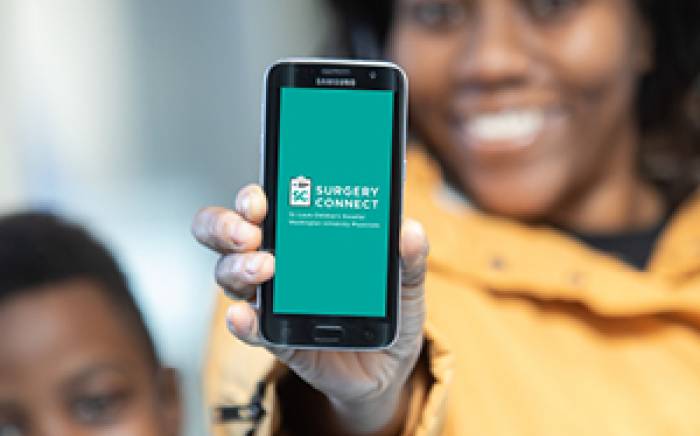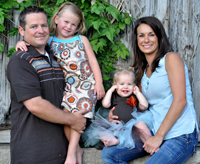 When Tiffany Morris was twenty weeks pregnant, her doctor delivered some scary news: her unborn baby had an omphalocele. “It was discovered at my routine ultrasound. My first reaction was shock—and then tears. I immediately hit the Internet to learn everything I could about this condition.”Initially, what she discovered was pretty frightening.
When Tiffany Morris was twenty weeks pregnant, her doctor delivered some scary news: her unborn baby had an omphalocele. “It was discovered at my routine ultrasound. My first reaction was shock—and then tears. I immediately hit the Internet to learn everything I could about this condition.”Initially, what she discovered was pretty frightening.
An omphalocele is an abdominal wall defect in which the anterior abdomen does not close properly allowing some of the baby’s organs—typically the stomach, liver and intestine—to protrude on the outside of the baby’s body.
Fortunately for Tiffany, she also discovered other moms whose babies had been born with an omphalocele and had experienced positive outcomes. As her pregnancy progressed, Tiffany was under the care of a specialist in her home state of Arkansas. “I kept going into labor. My doctor wanted to delay the delivery as long as we could so that baby Blair could get as big as possible.”
When Blair finally made her much-anticipated arrival, she spent two months in the NICU. “Because of the omphalocele, Blair experienced episodes of rapid breathing—which in turn affected her feedings. This was resolved by thickening her breast milk and formula combination. Our other priority was to immediately address the omphalocele. Based on my doctor’s recommendations—and my research—we opted for the “paint and wait” treatment.”
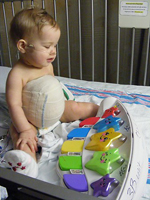
This approach involves “painting” the sac covering the omphalocele with Silvadene, a cream that is commonly used for burn patients. Over time, the baby’s skin grows over the sac. If the baby is eating and breathing well, doctors wrap the sac with an elastic bandage to slowly push the bulge back into the child’s abdomen. The “wait” part of the treatment involves waiting for the skin to grow as well as the baby’s abdomen to increase in size to accommodate the contents of the omphalocele to be returned to their proper place inside the baby.
In Blair’s case, she didn’t need to be hospitalized for the “paint and wait.” However, as her treatment progressed, Tiffany grew concerned at the appearance of Blair’s abdomen. “While the skin had grown over the omphalocele, we noticed that everything was gradually pushing back out of her abdomen when we removed the compression bandage.”
That’s when Tiffany decided to take Blair to St. Louis Children’s Hospital. “Several months of research led me to Dr. Brad Warner, surgeon-in-chief at St. Louis Children’s Hospital. I had heard great things about him and was impressed with his expertise in treating children with omphaloceles. I wanted to see if he could help Blair.”
The first time the Morris family met with Dr. Warner, his confidence, experience and approach for Blair’s treatment immediately put the family at ease. “The first stage of the closure involved widening the base of the defect and stabilizing the edges of the abdominal wall muscles,” says Warner, who is also the Jessie L. Ternberg Distinguished Professor of Pediatric Surgery, and division director of pediatric surgery at Washington University School of Medicine.” We also were able to begin reducing the abdominal contents back into the abdomen.”
“Dr. Warner is amazing. He was so calm about everything—very reassuring to us,” says Tiffany. I also really appreciated his support of our home care and my custom-designed compression wraps. He listened to me and encouraged our whole family.”
At Blair’s second surgery, Dr. Warner and his colleagues were able to achieve “full closure.” “This was called a ‘component separation’ of the abdominal wall, says Dr. Warner. “Which means we individually separated muscle layers of the abdomen to allow all of the abdominal contents to be covered with normal muscle and skin. We were also able to remove all the prior scar tissue and create a small belly-button!”
“We are so grateful to Dr. Warner and everyone at St. Louis Children’s Hospital. Blair is doing really well—we are so happy and relieved.”
While the process was stressful at times, Tiffany says Dr. Warner encouraged them every step of the way. “Thanks to Dr. Warner and his team, I always had it in the back of my mind that she would be okay. And he was right. We achieved the best possible outcome to what had at first been an overwhelming diagnosis.”


